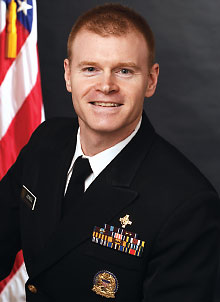Expanded Buprenorphine Prescribing Authority Gains Traction During Pandemic
Abstract
A survey suggests that prescribing buprenorphine for new patients with opioid use disorder without doing an in-person examination first can yield success. Is it time to make this pandemic-related exception to the rules a permanent option?
As part of nationwide efforts to ensure continued access to medication treatment for opioid use disorder (OUD) during the COVID-19 pandemic, last year the Drug Enforcement Administration (DEA) exempted health professionals who have a Drug Addiction Treatment Act waiver from having to examine new patients in person before prescribing buprenorphine. Now a survey of waivered health professionals suggests that remote prescribing may have gained a foothold in practice: One-third of respondents who had prescribed buprenorphine in the year leading up to the survey had taken advantage of the DEA’s emergency provision and prescribed buprenorphine to new patients without in-person examinations. Furthermore, 87% of these health professionals reported that their new patients did not encounter any difficulties with buprenorphine induction. The findings appear in Drug and Alcohol Dependence.

Patients must have reliable access to technology to benefit from remote treatment and prescribing, says Christopher M. Jones, Pharm.D., Dr.P.H., M.P.H.
“These results suggest that emergency provisions helped to mitigate disruptions in care,” said lead author Christopher M. Jones, Pharm.D., Dr.P.H., M.P.H., deputy director of the National Center for Injury Prevention and Control at the Centers for Disease Control and Prevention. “It seems reasonable that we should consider what role permanently adopting these provisions can play in expanding access to treatment.”
Jones and colleagues conducted an electronic survey of 10,238 DATA-waivered health professionals during the summer surge of the COVID-19 pandemic from June 23, 2020, to August 19, 2020. Most of the respondents were physicians, followed by nurse practitioners or others in the nursing profession, and physician assistants, at 68.4%, 25.3%, and 6.3%, respectively.
A subset of 7,419 respondents had prescribed buprenorphine in the 12 months prior to the survey, and of those, 33% reported prescribing buprenorphine without an in-person visit after the DEA’s exemption went into effect. They reported communicating with new patients via laptop or desktop with video, telephone without video, telephone with video, and/or tablets with video. The 67% in this subset who did not prescribe buprenorphine to new patients without first conducting an in-person examination cited several reasons, including a preference for in-person visits, not having any new patients, and having kept their practices open for in-person visits during the COVID-19 pandemic.
Respondents in the subset noted several challenges their patients faced in accessing care, with 48.2% reporting that their patients had experienced unreliable telecommunications such as a lack of phone, computer, or internet service.
“Reliability in communication is important. We can allow remote treatment and change reimbursements for remote treatment, but if patients don’t have access to the technology, they don’t really benefit from these changes [in policy],” Jones said.
Other barriers included unstable housing, lack of access to psychosocial services or behavioral health professionals, cancellation of in-person self-help or counseling groups, lack of transportation to the doctor or pharmacy, lack of access to psychiatric services for patients with co-occurring mental disorders, and an inability to find remote self-help or counseling groups.
“These are all issues that often exist among people with opioid use disorder, and they show that there are other barriers that we need to attend to if we want to maximize access to buprenorphine treatment,” Jones said.
Among all survey respondents, 20% reported that they had not prescribed buprenorphine for OUD at all since obtaining their waiver, and 7.6% reported that they did not prescribe buprenorphine for OUD in the 12 months prior to the study. The most common reasons for this were a lack of patient demand, concerns about managing patients with OUD, a lack of access to psychosocial services or other behavioral health care professionals for patients, and resistance from practice partners or lack of institutional support.
“These [health professionals] are untapped potential. Even the emergency provisions did not entice them to prescribe buprenorphine,” Jones said. “While there’s no single solution to expanding access to buprenorphine, we have to think about the various motivations and barriers for providers regarding the practice of prescribing it.”
Jones said that the pandemic has provided a “natural experiment” in providing mental telehealth services.
“It has presented us with historic challenges, but has also spurred innovations. The challenge now is to document and share our experiences,” he said. “How can we use our innovations and experience to improve patient care beyond the pandemic?”
The researchers reported no outside funding for this study. ■
“Characteristics and Correlates of U.S. Clinicians Prescribing Buprenorphine for Opioid Use Disorder Treatment Using Expanded Authorities During the COVID-19 Pandemic” is posted here.



